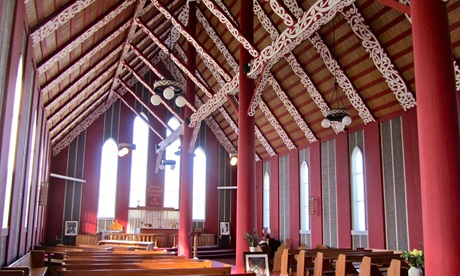What place does the Treaty of Waitangi have in the Catholic Church in Aotearoa-New Zealand?
It’s a question focused on at present by two Catholic organisations – the Christian Life Community and the Bicultural Committee of the Archdiocesan Commission for Ecology, Justice and Peace.
They have already held a two-day hui to further their thinking and gather ideas.
The hui gave them a shared understanding and appreciation of the Treaty and related issues.
“There is some confusion and anxiety at times and certainly when we look at the political landscape, looking at the principles of Te Tiriti” said Mat Ammunson of Wairarapa Moana in a Waatea News interview.
“I guess it would be understandable for some people to be a little anxious in that space.”
The Treaty covenant
The Treaty of Waitangi – Te Tiriti o Waitangi – is more than a document Ammunson told hui participants.
As an agreement between two peoples, the Treaty has a spiritual dimension, so it’s often referred to as a kawenata tapu or sacred covenant.
Within the Treaty context, we start talking about things like tika and pono, he says.
“Pono is an essential foundation concept which encompasses both truth and genuineness, and which provides the deeper ethics from which tika, doing the right thing, operates.
“We recognise that this is an agreement between two people, and so we’re talking two people, two bodies, so it becomes inherently spiritual.
“We’re starting to talk about mana and tapu.
“Tapu refers to ethical behaviour that acknowledges the intrinsic value of each and every person and thing, and behaving according to this principle.
“And then through spirituality and these values, we recognise a commitment between two people and parties is formalised.”
The parties’ commitment encompasses whanaungatanga, which is about relationship, kinship and a sense of family connection.
This comes from shared experiences and working together, providing people with a sense of belonging.
“This is how we get the idea that it’s a kawenata tapu, a sacred covenant” he said.
Mixing and matching
The Treaty covenant is for all generations. It resonates with Catholic social teachings, Ammunson said.
“Key principles of Catholic social teaching are participation, common good, distributive justice, preferential options for te pani me te rawakore (orphans and poverty), human dignity, stewardship, solidarity, promotion of peace and subsidiarity.
“As Catholics and as a Catholic Church we support actively protecting taonga.”
Taonga include the Māori language and Māori culture, he said. Some parishes conduct the Mass in te reo. The Church increasingly embraces a wide range of cultures and languages.
For the Church – and local churches – honouring the Treaty involves developing excellent relationships with Maori people within their region.
Equitable outcomes
We need to consider how as a Catholic community we can support our whānau, hapu and iwi aspirations, Ammunson said.
“This comes back down to a couple of things.
“Awareness of what is within this covenant and then making sure that we’re undertaking a correction of what has been done in the past.”
Next weekend a working party will meet to create a statement that synthesises the themes put forward at the hui.
Source
